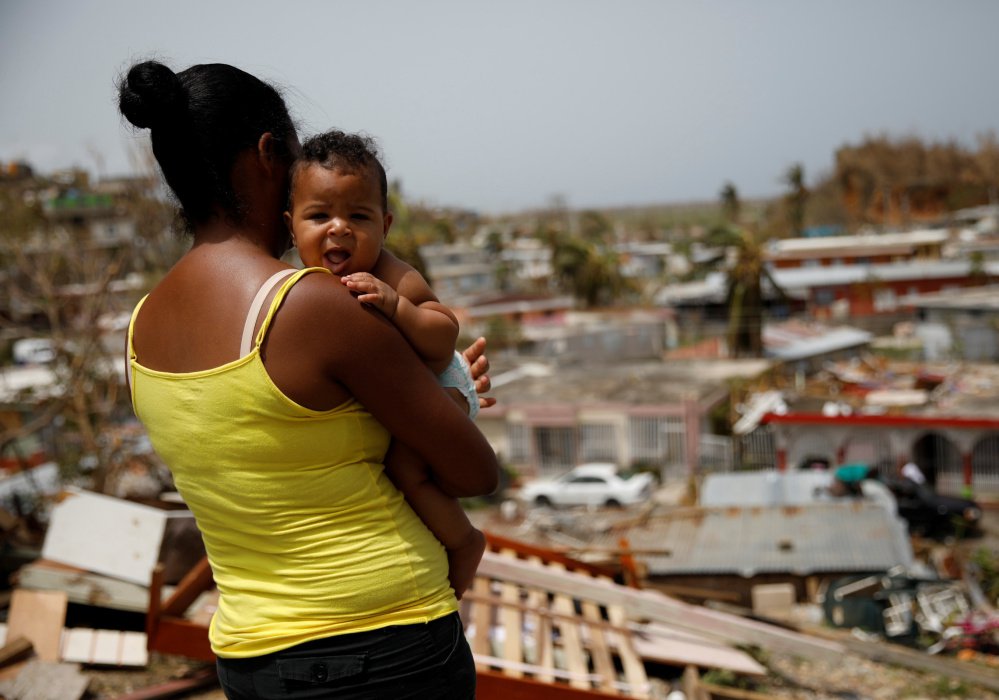President Donald Trump’s apathy to the plight of 3.4 million U.S. citizens in Puerto Rico has been apparent since Hurricane Maria devastated the island in September. Perhaps Trump has been counting on American voters not caring much about the story, either. Puerto Ricans cannot vote in presidential elections; polls show that almost half of Americans don’t even know Puerto Ricans are U.S. citizens.
But even those in charge of American newsrooms who are aware that Maria and its aftermath is a domestic disaster did not cover the catastrophe as extensively they did Texas and Florida, hit just weeks before Puerto Rico was by massive hurricanes.
National media only started to pay attention to Puerto Rico after days of silence by Trump. When Trump started a fight with San Juan Mayor Carmen Yulín Cruz, Puerto Rico finally started to get more coverage.
An examination of over 80 print and online media coverage across the United States shows that more than 1,100 news outlets carried stories about Harvey and Irma, the two other monster storms that struck U.S. soil this hurricane season, while only about 500 carried stories on Maria in a similar time frame. Overall, Hurricane Maria received three times as few mentions in text than hurricanes Harvey and Irma.
Data from the Media Cloud project at the MIT Media Lab shows that U.S. media outlets ran 6,591 stories online about Maria from Sept. 9 through Oct. 10. By comparison, news outlets published 19,214 stories online about Harvey and 17,338 on Irma.
Coverage of Maria was surprisingly scarce in the first five days after the storm made landfall in Puerto Rico as a Category 4 hurricane. Despite extensive destruction, the five network talk shows on Sunday morning, Sept. 24, spent less than a minute in total covering Puerto Rico, according to an analysis by progressive media watchdog Media Matters.
Many news organizations sent reporters to the island who did outstanding work in very difficult circumstances. But the numbers show their newsroom bosses didn’t judge the story as worthy of top billing. The Sunday after Maria hit the island, the New York Times front page had no mention at all of Puerto Rico, which was set aside in favor of stories filed from Florida, Alabama and Trump’s NFL tiff.
When the media did finally start paying attention, it was sparked by political controversy stemming from tweets by Trump criticizing San Juan’s “nasty” mayor, while almost completely ignoring the dire humanitarian situation in Puerto Rico. TV coverage has fallen dramatically since Trump visited the island on Oct. 3, even though the situation on the island is still dramatic. Some are comparing Puerto Rico’s crisis to the situation of another poor community populated by another racial minority: Flint, Michigan, where residents have been struggling for years to obtain clean drinking water.
According to the MIT Media Lab’s analysis, the language used to discuss Maria was far more political with several mentions of “Congress,” “Senate,” “Democrats,” “Republicans,” “debt” or “tax.” Coverage of Harvey’s floods near Houston, on the other hand, focused more heavily on the storm’s toll on people, with high usage of terms like “victim” and “family.”
That disparity in coverage wasn’t necessarily because readers weren’t responding to news about Maria, either. Using a time span of one week before the storm’s landfall and one week after its end, the average number of shares for a story about Maria on Facebook was 4,530 — partly driven by stories on relief efforts by celebrities and civil society — compared with 3,553 for Harvey or 2,818 for Irma during the equivalent time span after those storms. On Google Trends, Irma garnered far more searches than Harvey but had comparatively far fewer stories in the news.
This lack of interest for some tragedies is a long-standing reflection of how the news business works. Cultural affinity shapes media coverage. In the case of Puerto Rico, where the main language is Spanish, the cultural gap may be one of the reasons the island is persistently undercovered by mainland media. While Hispanic America has been growing in size — representing 17.8 percent of the population now — U.S. newsrooms are not reflecting that change. Hispanics comprise only 5.5 percent of newsroom employees, according to the most recent American Society of News Editors newsroom employment diversity survey. Minority journalists of any background comprise just 16.6 percent of the workforce in U.S. newsrooms.
Perhaps with a more adequate representation in the media, Puerto Rico — and Hispanic America in general — would be more visible to the rest of the country.
Anushka Shah and Allan Ko are researchers at the MIT Media Lab. Fernando Peinado is a political reporter at Univision.
Copy the Story LinkSend questions/comments to the editors.



Success. Please wait for the page to reload. If the page does not reload within 5 seconds, please refresh the page.
Enter your email and password to access comments.
Hi, to comment on stories you must . This profile is in addition to your subscription and website login.
Already have a commenting profile? .
Invalid username/password.
Please check your email to confirm and complete your registration.
Only subscribers are eligible to post comments. Please subscribe or login first for digital access. Here’s why.
Use the form below to reset your password. When you've submitted your account email, we will send an email with a reset code.